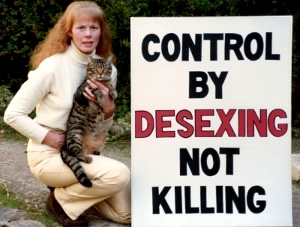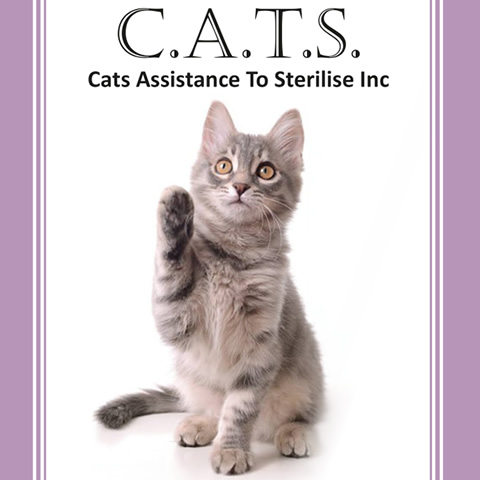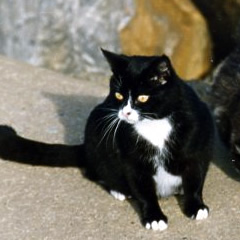WARNING
The Cats Bylaw 2024 was passed virtually behind your backs.
(see actions you can take below)
After stating in the Agendas for weeks that the Cat Bylaw was laying on the table and that…
“1. This information is provided to Council to assist in managing motions lying on the table. This report sits as a record on the agenda for information purposes only, and is not intended to be a matter considered at the meeting.
3. Process for retrieving motion
3.1 Only a record of the motion lying on the table will be placed on the Council Meeting Agenda (rather than the full report). This will be provided for the purposes of transparency in identifying that there is still a motion lying on the table.
3.2 While there is no formal requirement that notice be given to retrieve this motion from the table, legal advice provides guidance on and that when taking into account the Guiding Principles in Regulation 5 of the Local Government (Procedures at Meetings) Regulations 2013, it would be considered most appropriate for this to occur through a written Notice of Motion.“
In spite of this statement inferring that constituents will be advised in the Agenda that the debate and vote for the Cats Bylaw 2024, there was no warning at all and the Motion was moved from the floor by Cr Lucas Jones, debated and passed.
This was in spite of a request for a deputation by at least one resident and ratepayer who had already written her speech and formally applied to speak when the Cat Bylaw was to be on the Agenda.
After 35 years of donating our services for free, costing the ratepayers nothing, working in the Tea Tree Gully Council area, much of this in a partnership with the Council which was recorded in detailed paperwork, the agreement with C.A.T.S. has been broken by the Council, as it was under the condition that no cat bylaw would be imposed.
Thousands of cats have been desexed from the TTGC area and thousands of residents have been helped via our Hotline, both residents with cats and those who are inconvenienced by cats, with amicable solutions negotiated through free mediation with C.A.T.S.
As far as C.A.T.S. is concerned we are absolutely disgusted and outraged that this is the way Council has treated its residents and as this is the situation now we have no trust whatsoever in this Council.
If this is the way the Council treats its residents, who could trust it to have anything to do with the cats.
Our formal resignation has been submitted to Council and we wish to advise residents and cat supporters that we will be having no further contact with the Council. When trust is broken it cannot be restored and as C.A.T.S. is an ethical organisation built on trust, honesty and truthfulness this kind of behaviour cannot be acceptable to us.
All our records are and have always been confidential as we never disclose any private details of names and addresses and we do not keep any records of microchips.
We are not the Cat Police and our loyalty is to the cats and the people who care for the cats and the residents who need help in finding amicable solutions to issues which concern them about cats.
Although C.A.T.S. cannot advise anybody to break the law regarding these cat bylaws, it is very hard for Councils to actually enforce them.
C.A.T.S. has campaigned for years to have the diabolical cat trapping cages banned to the public and it is clear now that Council could risk litigation if they let people use these cages.
Council will also risk litigation by mandating the use of collars and promoting collars with leashes which endanger both cats and those walking the cats.
If food is put out for the native wildlife, which is legal, and the cats eat it then how can you be held responsible?
If a cat is on your property it could be one which just comes and how can you stop it if you don’t have a cat-proof fence?
Also, remember that if you have a microchipped cat which is recorded on Dogs and Cats Online (DACO) the Council can track you down by getting your private details from DACO and when the cat bylaw is imposed and has an added registration fee you will be fined if you do not register on the Council database and pay the fee and any fines associated with breaking the cat bylaw.
When this happens I will be interested to know how many cats have “died” or “run away” as has been the case in Campbelltown Council. I also fail to see how Council will ascertain if they haven’t!!!
Residents without owned cats have also been badly treated as cat bylaws can run into hundreds of thousands of dollars and compliance is so low that obviously the ratepayers foot most of the bill. So do the renters as the landlords raise the rents.
There is no tangible evidence that cat bylaws have been successful but there is plenty of evidence-based data to prove that they are failing and a disaster.
Finally, and importantly, there were two councillors who were opposed to the way this behind your backs deceit was undertaken and these were Councillors Champion and Drozdoff who insisted that warning of the resumption of the cat bylaw laying on the table should be included in writing in an agenda before it was debated and voted upon. It was obvious that they did not consider that what has happened was following moral, due process, as had been inferred.
Take Action
If you want to try and stop this Cat Bylaw 2024 before it is passed by Parliament you can…
- Email the Legislative Review Committee and tell them that you were deceived by Council because you understood that warning was to be given before the cat bylaw was debated and voted upon (email: seclrc@parliament.sa.gov.au)
- Email the State Ombudsman (email: ombudsman@ombudsman.sa.gov.au)
What this Council has done is disgraceful, disgusting and totally unacceptable. Don’t let them get away with it.
Christine Pierson
President





